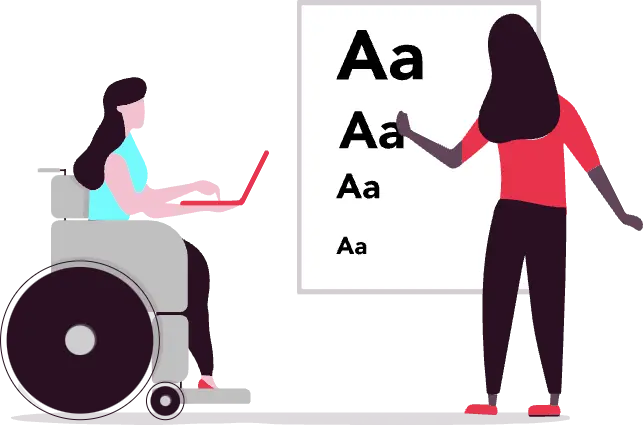


Deliver outstanding customer experiences across your digital channels
Our experienced design team carry out extensive user testing at every stage of the journey. Through interactive prototyping, rapid application development and iterative testing during delivery cycles, we make sure your customers engage and convert.

UX Strategy
To ensure you set the vision and get the most value from your digital efforts, we’ll help you shape your UX strategy using data. User research, as well as competitor and market analysis, are the first steps to discovering the value that customers expect from your digital solutionstoday. Then we move on to road mapping, defining the measurement framework and establishing continuous user testing throughout the process, to ensure the data keeps informing decisions as your digital product develops.

UX Audit
If you’re looking to improve your existing web platforms, a great place to start is to conduct an audit to investigate how your customers are using your platforms today. The findings can provide a robust foundation on which to build any future improvements. The areas of audit revolve around how the users interact with your web content. Do they convert with your calls to action and how easily can they navigate to the pages you want them to land on in order to convert?

Digital Product Design
Our UX team combines brilliant creative design ideas with functionality and practical use of the designs by the end user. We will support your web development teams on every aspect of the development journey and together, we’ll generate ideas using sketches, ideation and wireframes, and move on smoothly to build a prototype in hi-fidelity designs and code. To ensure we’re always coding with the end user in mind, we’ll keep testing the prototype with users and analyse the results.

Usability Testing
Whatever digital solution you’re building for your business, your customers will make the final judgement on whether the solution is helping them to find (and buy) the products or services they’re looking for on your web or e-commerce platform. To risk-proof the effectiveness of any user journeys, we’ll keep testing the prototype with real users, employing one-on-one testing, guerrilla testing and online testing. Using the findings, we’ll analyse the results to influence the design and make data-backed decisions on any iterations.

Accessible & Inclusive Design
Universal accessibility and inclusivity lie at the very heart of our web design. We look at accessibility from a universal point of view, which means we don’t only tick the WGCA AA boxes, but we analyse your audience on a much deeper level to be able cater to their needs as best as we can. Using this approach, we look not only at any chronic health conditions that limit the digital experiences, but also socio-economic factors, cultural environments, community and other demographics that can affect your customers' experience on your web platform.

User Research
User research focuses on unlocking insights into your current and prospective users’ practical and emotional needs and their accompanying behaviours, perceptions and context of use and challenges. Using insight builds greater certainty into key design and development priorities and decisions we make with our clients. It also helps unlock value and speeds up the delivery process as we know what, why and how we need to be delivering the target digital outcomes. Based on your project scope and objectives, we start work by identifying an appropriate user research programme to meet them. Our research services range from desktop to competitor landscape reviews to web analytics and user interviews (1-2-1 or group-based). We also use online surveys and preference and validation testing where appropriate.








